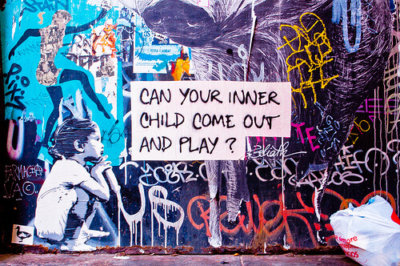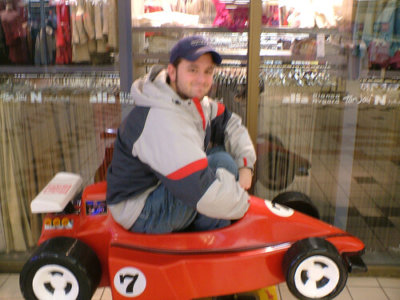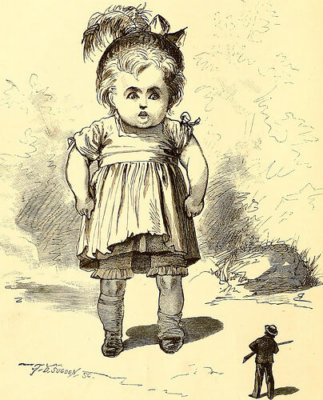What is the “Inner Child”?

By: Davidlohr Bueso
A term embraced by the self-help and New Age movements, the “inner child” can seem a cliché.
Despite it’s overuse, the idea of an ‘inner child’ is actually an important and useful concept that arises from psychotherapy.
Many schools of therapeutic thought acknowledge the childlike side to our personalities that ‘the inner child’ refers to. they can call it anything from ‘the child archetype’, “the child within”, the “wonder child”, or ‘the wounded child’.
What is the inner child?
The term inner child of course does not imply that there is a little child living inside of you, or that part of you brain is delegated solely to childish thoughts!
The general idea is that we all have a childlike aspect within our unconscious mind. The inner child can be seen as a ‘sub personality’. This is a side of your character that can take over when you are faced with a challenge.
The inner child reflects the child we once were in both his or her ‘negative’ and ‘positive’ aspects. Both our unmet needs and suppressed childhood emotions, as well as our childlike innocence, creativity, and joy, are still waiting within of us.
The repressed emotions would be all the things you were taught as a child not to feel if you wanted to be be loved. So if you were only offered attention when ‘good’, you might find the inner child holds rebellion, sadness, and anger. Or, if you experienced trauma or abuse, you would have learned to hide pain and fear to survive.
The inner child can also hide all of the things we were taught to think about ourselves by parents, teachers, or other adults. This can sound like, “you better not say what you really think”. “Don’t try to get that promotion you just aren’t smart enough”. “Big boys don’t cry”, or “sex is dirty”.
Why is it an important concept?
The idea is that accessing your inner child allows you to find the roots of your issues as an adult.
Inner child work can help with the following:
- discovering and releasing repressed emotions holding you back
- helping you recognise your unmet needs
- assisting to resolve unhelpful patterns
- offering an opportunity for increased self-care
- helping you be creative and playful
- raising your self-respect.
How did the concept of the inner child come into being?

By: Robert Meeks
Many attribute the beginnings of the inner child to Carl Jung. He included a ‘Child archetype’ in his list of archetypes that represent individuation – the development of the different parts of self into a functioning whole.
Carl Jung took a strong interest in the ‘child inside’ after his break with Freud. He mentions in his book Memories, Dreams, Reflections that he became aware he’d lost the creativity and love of building things he’d had as a child. He noticed the emotions that arose while remembering his childhood creativity and set out to develop a relationship with his ‘small boy’, starting to do playful things that then bought on other memories and emotions to be dealt with.
The child archetype, in Jungian theory, can be a way of helping us connect to the past, as we recollect our experiences and emotions as a child. And this can then also help us mature and realise what we want from the future.
Transactional analysis became the next psychological movement to bring the idea of a ‘child inside’ to attention. An offshoot of psychoanalysis developed in the 1950s, it sees the way we act around others as coming from one of three ‘ego states’ namely child-like, parent-like, or adult-like.
By the 1970s, several forms of ‘inner child’ concepts were being used, both by self-help writers and by the 12-Step movement and the evolution of codependency concepts.
Does all therapy involve this concept?
There are many different approaches to healing emotional and psychological issues nowadays. Some forms of therapy don’t use the idea of an inner child or even approach the past much at all. An example is cognitive behavioural therapy, which focuses more on the link between your thoughts, feelings, and behaviours.
Should I find a therapist who can help me with my inner child?
It’s really down to what works for you. If you had a traumatic childhood, if you have difficulties accessing how you feel, and if you find trust and connecting with others a challenge, inner child work might be useful. If you aren’t certain, ask the therapist you are working with, or try a self-help book on the subject.
Interested in doing inner child work? Harley Therapy connects you with highly trained counsellors and psychotherapists in three London locations, or worldwide via Online therapy.
Still have a question about what is the inner child? Or want to share an experience with our readers? Use the comment box below.






Hi
I would like more information on inner child therapy. I find it very interesting and relevant.
Thanks
Joyce
Hi Joyce, great to here you find it intriguing! We do, too. In fact we have another article on it, directly talking about inner child therapy, did you see it? https://www.harleytherapy.co.uk/counselling/inner-child-work-can-benefit.htm